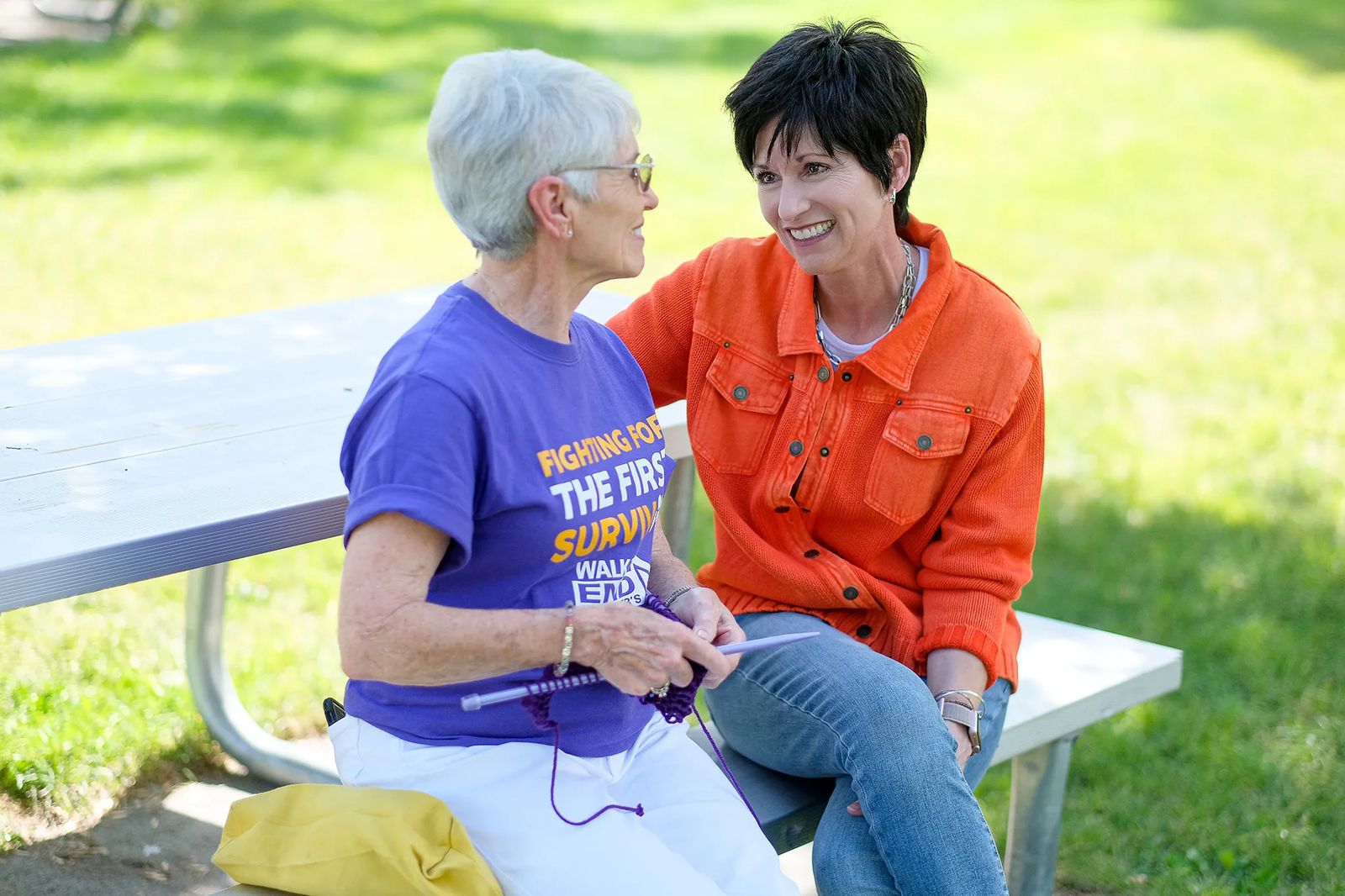
Planting a Promise
Lynn Mullowney Cabrera longs for a day without Alzheimer’s
In an Alzheimer’s Association Promise Garden, bright and bold pinwheel flowers spin in the breeze. They might look like simple splashes of blue, purple, yellow and orange. But each one staked in the ground represents how the person who planted it has been touched by the degenerative brain disease.
Purple means the disease took someone you loved. Blue means you’ve been diagnosed with one of the dozens of types of dementia. Yellow signifies you are a caregiver of someone afflicted. And orange symbolizes a longing for the day when this mind-robbing disease no longer exists.
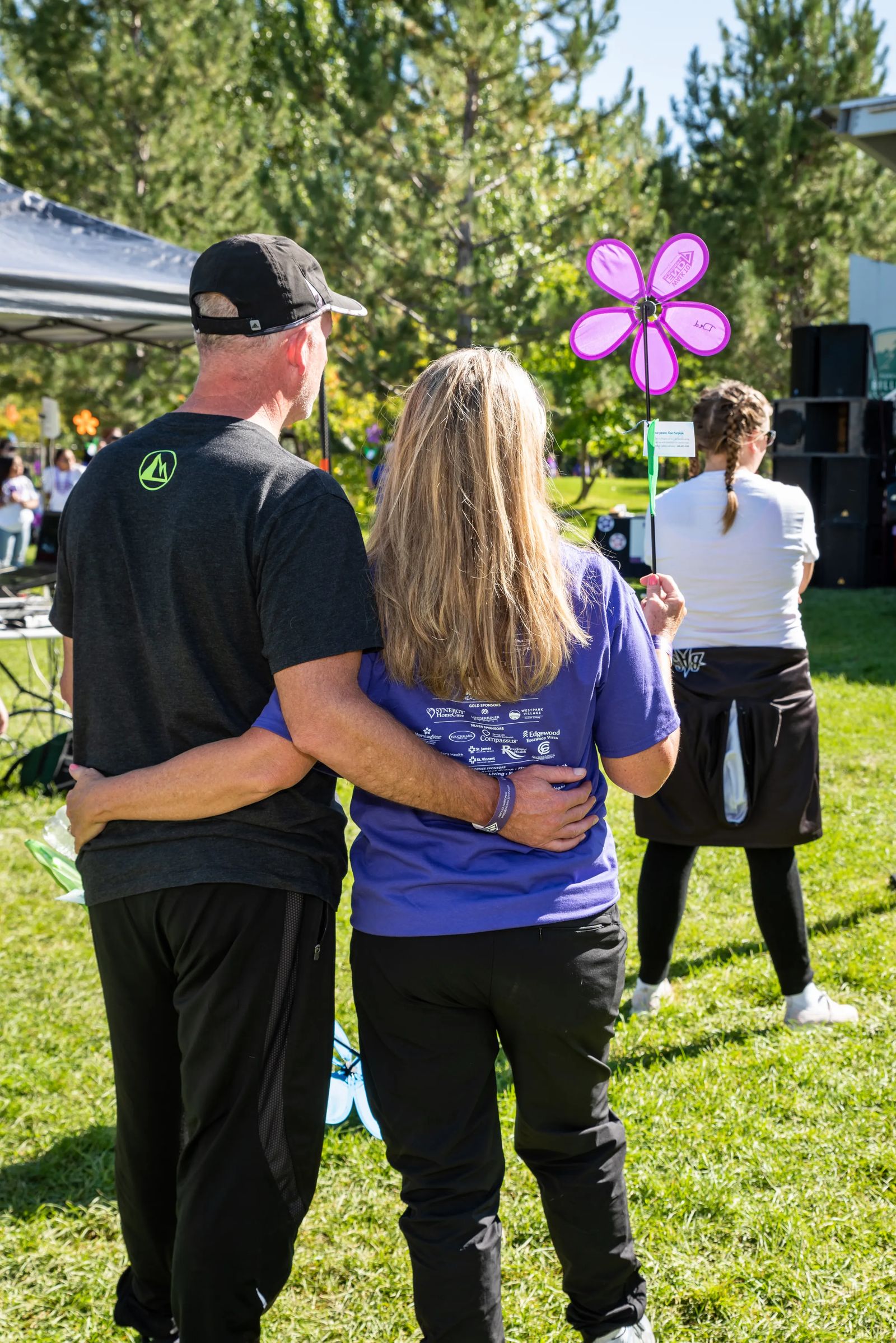
Fifteen years ago, when Lynn Mullowney Cabrera took a job as the communications director at the Orange County Alzheimer’s Association to be closer to the love of her life, Nardo, she would have grabbed an orange pinwheel flower. Today, her Promise Garden holds not only an orange flower but two purple and two yellow ones as well.
“I think everyone is touched by this,” she says. As a woman who has always worked in the nonprofit sector, Lynn was taught to roll up her sleeves and help her community whenever and wherever there was a need. When she saw a listing for a job with the Alzheimer’s Association back in 2005, the work intrigued her.
“Every day, I pray the Prayer of Jabez, asking God to essentially enlarge my territory, show me the work He needs me to do, give me the tools to do it and help me not to cause harm,” she says. When she spotted the listing and applied, she says, “They told me, ‘You know, we are one step away from filling this position.’” They claimed they had removed the listing from all the job boards when Lynn touched base. “I said, ‘OK, maybe we should talk.”
She was offered the job, and within a short time she moved from the communications job into the role of vice president of development.
“Talk about enlarging my territory even further!” she says.
While she loved the work and saw what a well-funded nonprofit in a large community could do, her Billings roots kept calling her home. Her family is here. She loved the small-town feel, even in Montana’s largest city.
“You go places and people are friendly,” Lynn says. “They make eye contact. They love to smile. I missed that.”
She started daydreaming and searching want ads, spotting an executive director role at Make-A-Wish in Montana.
“I said to my mom, ‘What do you think?’ She said, ‘Oh Lynnie, Make-A-Wish is nice, but Alzheimer’s is important.’” Lynn adds, “Within two weeks, I learned the Alzheimer’s Association had this position.” It was for the executive director of the Montana Chapter – based in Billings, serving the entire state with Alzheimer’s awareness, support, prevention and advocacy programs.
She landed the job. But with Nardo still working in California, for two years she traveled back and forth before the two eventually settled back down in Billings. That was five years ago.
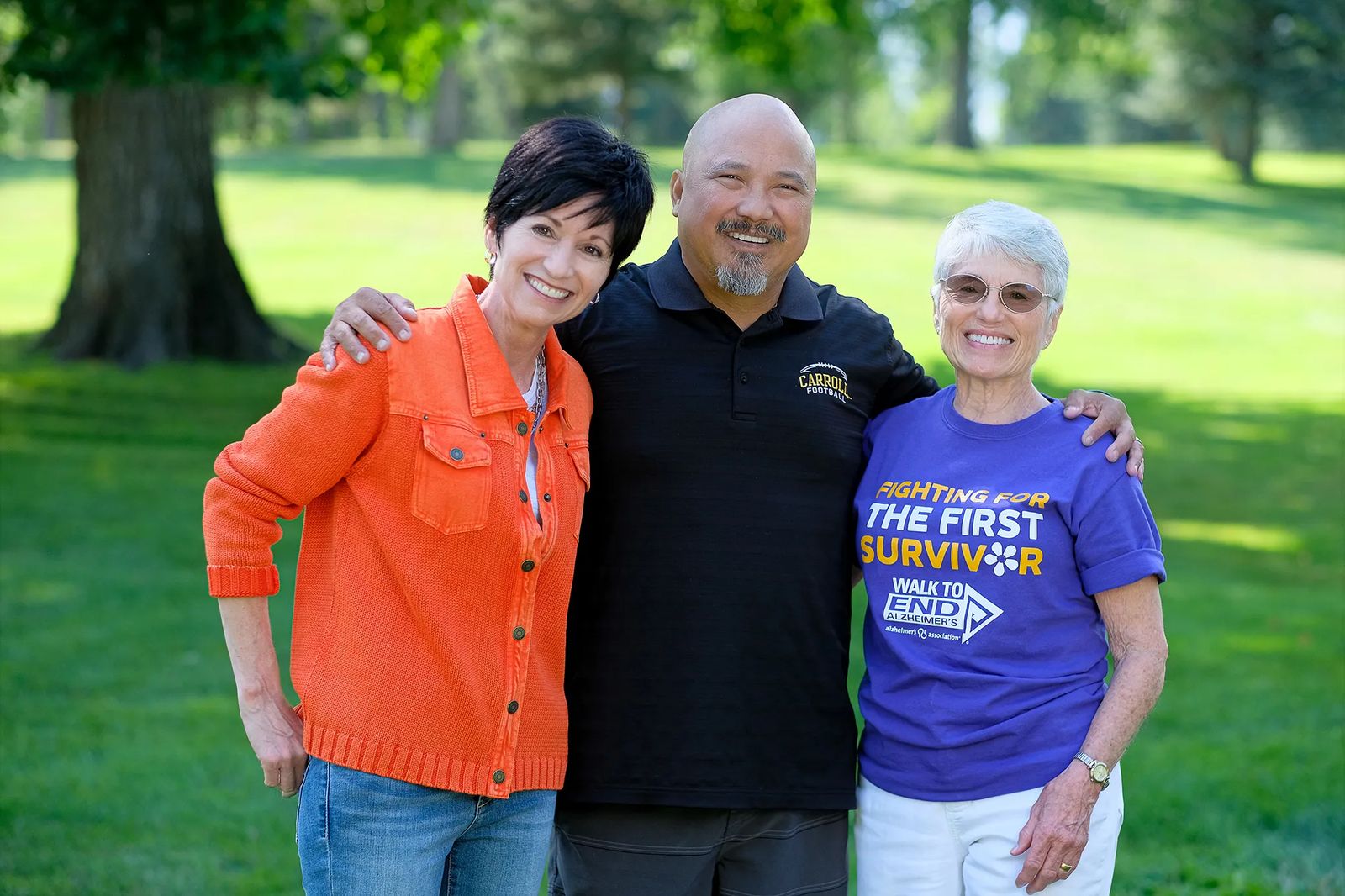
At around the same time, her husband Nardo was silently noticing changes in his own body. He had difficulty tracking conversations at work and would lose words mid-sentence. Walking down the stairs, he struggled with his balance.
“He worried and wondered about it for three years,” Lynn says. “He said, ‘I hear you talking all the time about the 10 warning signs of Alzheimer’s. I think that’s me.’ I said, ‘Really? Okay.’”
Lynn was keenly aware that those living with early dementia do recognize the symptoms a lot earlier than they let on. After admitting they suffer symptoms, diagnosis is often the next big struggle.
“We went in and the primary care physician said, ‘Oh, you’re just stressed.’” It made sense. At the time, Nardo was working in management at an aerospace engineering company, sometimes juggling overseas assignments. Lynn adds, “Next year, we brought it up again and the doctor said, ‘Oh, you’re just tired. You need to get more rest.’”
Finally, three years and seven doctors later, a diagnosis came. After a battery of tests, the news was delivered over the phone. Nardo suffered from mild cognitive impairment.
“They said, ‘It says here that you should do online brain training and come back and see us in two years,’” Lynn says. “I said, ‘Wait. I’m sorry. Come back and see you in two years? If this was a curious skin lesion, you’d say, get in here. Let’s do something about this, right?’ I wish I could say that our situation was unique.”
They landed yet another referral for a neurologist, a dementia specialist, who evaluated Nardo’s medical file and quickly ordered up a PET scan, to look at the activity in his brain.
Based on some dark spots (lack of cell activity) in some portions of his brain, the doctor determined Nardo had young onset dementia, more specifically Frontotemporal Dementia, a degenerative condition that attacks the frontal and temporal lobes. Nardo’s memory is excellent. In some people, the disease tends to attack personality and behavior. In others, it sparks difficulties with language.
At the time, Nardo was 53 years old. Doctors said his lifespan would probably max out in five to eight years.
“When I was first diagnosed, I thought, what am I going to do now?” Nardo says. His wife looks at the early diagnosis as a blessing. “You just approach life differently when you know more,” Lynn says. “We have an eyes-wide-open approach.”
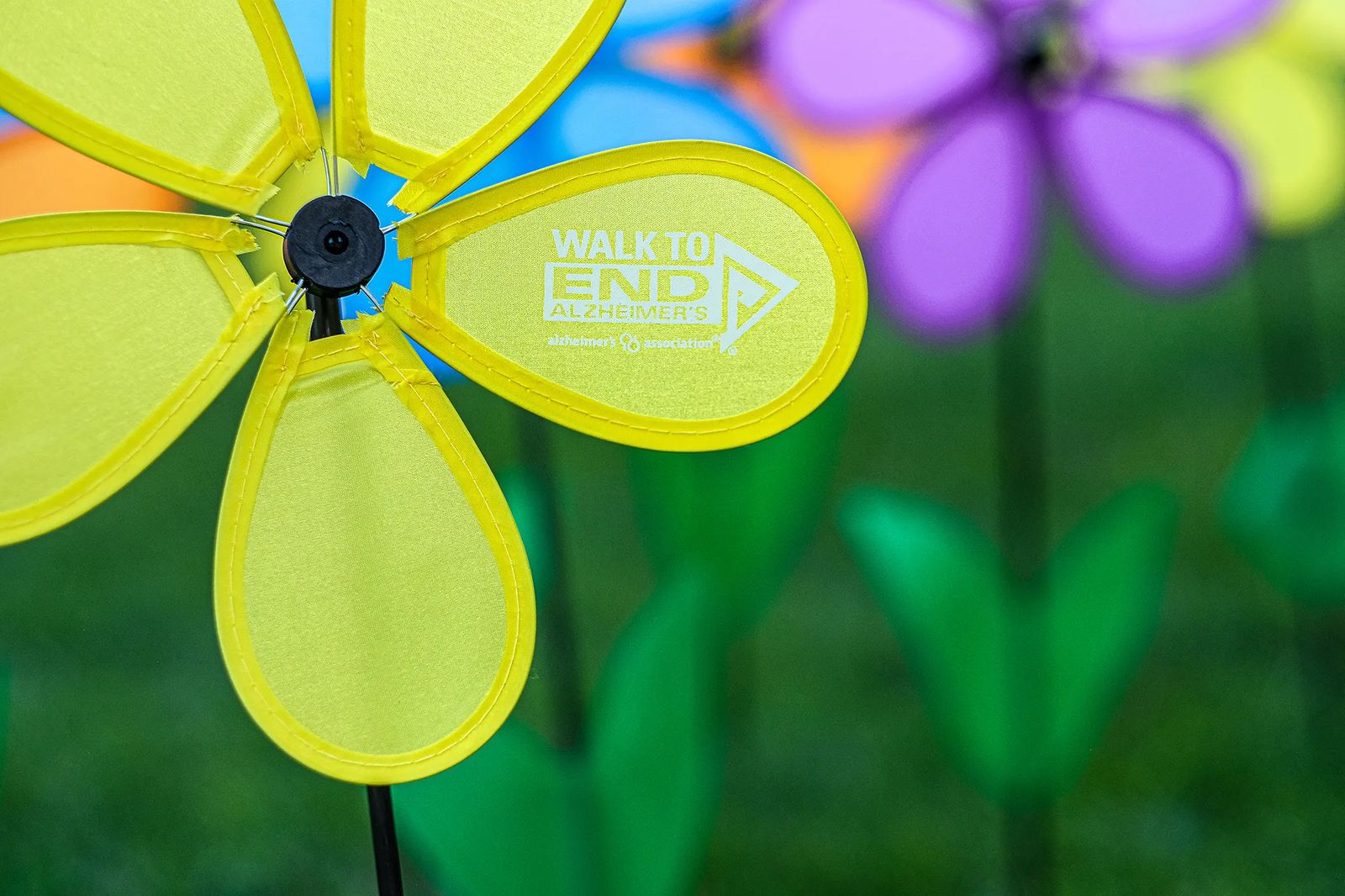
At that moment, Lynn earned her first yellow Promise Garden flower.
As she looks back on the journey, she remembers one doctor trying to put Nardo on the Alzheimer’s drug Aricept to help with cognitive clarity. Another thought he needed an anti-depressant. Both, Lynn says, would have made his condition irrevocably worse due to his type of dementia.
“Just getting to an accurate diagnosis helped make sure that whatever they did for interventions were going to be neutral or better but certainly not harmful,” Lynn says.
The fact that she took a job 15 years ago that has paved the way for her to be able to help those she loves is something not lost on her.
“Life is fully loaded, right? Everything else doesn’t stop when a diagnosis of Alzheimer’s or dementia starts. How do you adjust?” Lynn says. “From every situation, we encounter a lesson.”
The lessons continued time and again in 2019.
“It was April a year ago, we went up to see my dad at his cabin in Absarokee,” Lynn says. She had spoken to him on the phone before she jumped in the car. All was good. “Between the time we left and the time we got there, he had fallen and cracked his head on the stone floor.” Observing her dad’s behavior, Lynn knew right away this was more than just a slip and fall. “I do this work,” Lynn says. “I didn’t want to see it because I think then that means, ‘What do we do?’”
At 80, her dad, Mike Mullowney, was diagnosed with vascular dementia.
“He had high blood pressure. He probably wasn’t that healthy of an eater,” Lynn says. “All of a sudden, this man who was on no meds was on seven different things.” She adds, “As a family, we weren’t able to provide the 24/7 care Dad needed.” The family agreed to move him into an assisted living community.
“We were looking into the future and thinking, how do we pay out of pocket for this month after month?” Lynn says. “We deplete all of his assets and then we deplete all of our own? It gave me a keen insight into what families struggle with.”
Last Christmas Eve, her dad suffered another stroke. He died six days later. With his death, Lynn earned a purple Promise Garden flower.
During the difficult months helping coordinate her father’s care, Lynn reflects on how torn she felt trying to be there for her parents, for her husband and for all the families she served through her work.
“I called the Alzheimer’s Association Helpline. I parked my car in a cul-de-sac a block from my house and I called,” she says, noting the line is open 24 hours a day, seven days a week by master’s-prepared social workers. “I just needed to talk,” she says. “As Alzheimer’s and dementia unfolds, it does so in pretty insidious ways — in ways that you can choose to ignore so you can avoid figuring out what the implications of that are,” Lynn says.
She pauses before saying, “You probably know my mom has been diagnosed?”
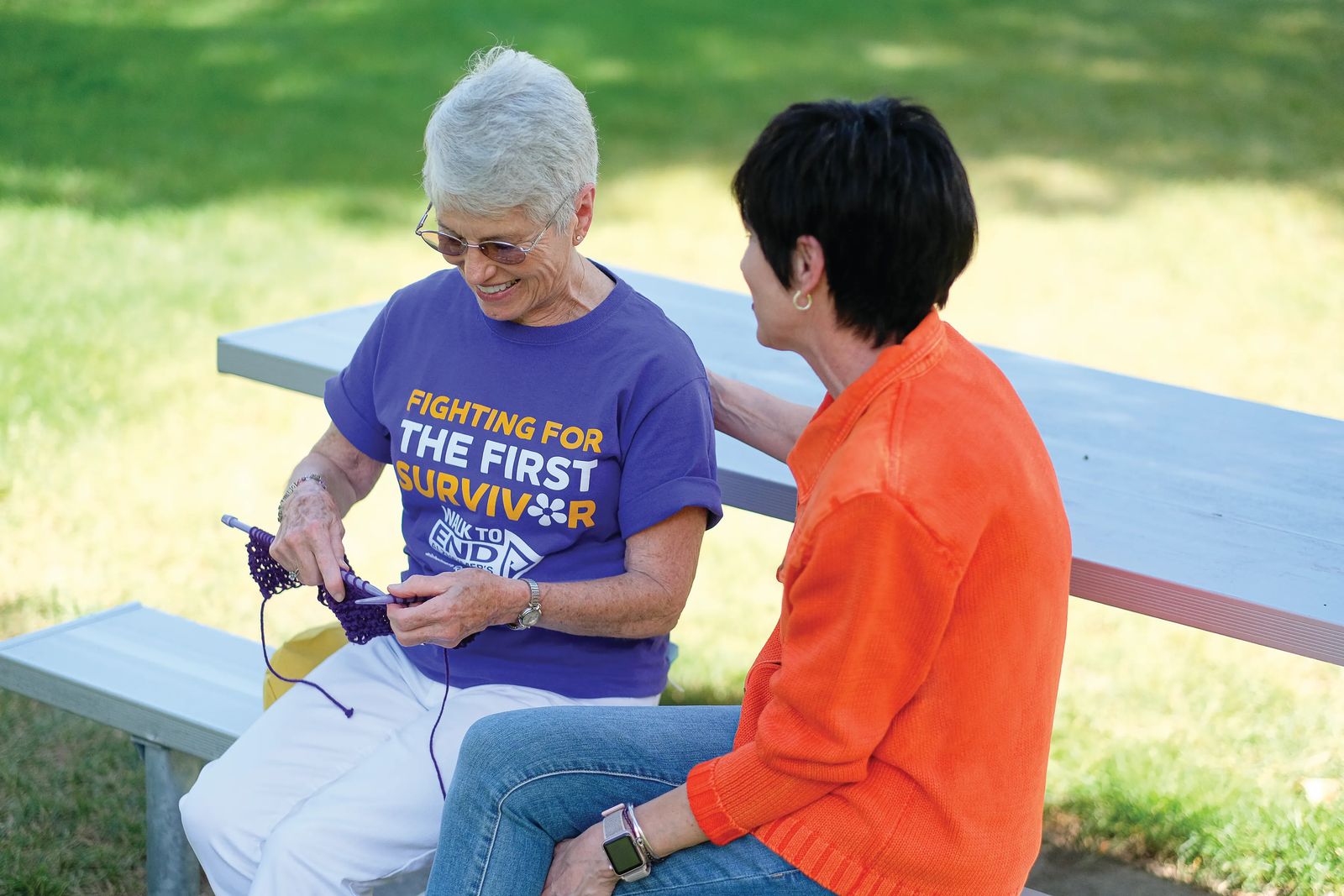
Lavina Guertin, Lynn’s mom, is what many would call an Energizer Bunny of a woman. On the day we met up with the 81-year-old, she raced her daughter to her car to grab a bag with her latest knitting project inside. She knits prayer shawls, each stitch woven with prayers for those who might need a spiritual pick-me-up.
Proving no two cases of dementia are alike, Lavina shares that hers came to light after a series of emergency surgeries. In 2018, she was cleaning her shower. When she touched a piece of the metal frame to clean it, she felt a burning sensation. Her finger became so swollen, she says, it doubled in size. Doctors determined she had an aggressive Strep C infection.
“She was rushed into emergency surgery and over a period of eight days, she had four complete surgeries on it where they put her under,” Lynn says.
“It just changed my whole world,” Lavina says. “The hardest thing for me is memory. Someone will tell me something and, a few seconds later, it’s gone.” She also says as the day turns to evening, her patience dwindles. “I can’t do anything that requires concentration in the late afternoon or evening,” she says. She has difficulty finding the right words. She’s locked her keys in her car. She’s walked to church, only to realize there’s not a service that day.
“My guess is that she had the Alzheimer’s pathology in her brain but it might only have been noticeable to the informed eye. It wasn’t really affecting her life,” Lynn says. She believes the trauma of the anesthesia and the infection proved to be the tipping point in her mother.
“She’s very good about calling and checking on me,” Lavina says as she looks to her daughter with a smile.
Another yellow Promise Garden flower for Lynn.
Along the way, there was one additional flower added, a purple one. Shortly after Lynn took the job in Orange County, she and Nardo realized his father, Dr. Hermino Cabrera, was living with vascular dementia. The highly repected provider died in 2015.
With every passing day, Lynn pays attention to the latest research. She’s closely watching news about the drug Aducanumab, now before the FDA. It’s showing promise when it comes to slowing the progression of Alzheimer’s.
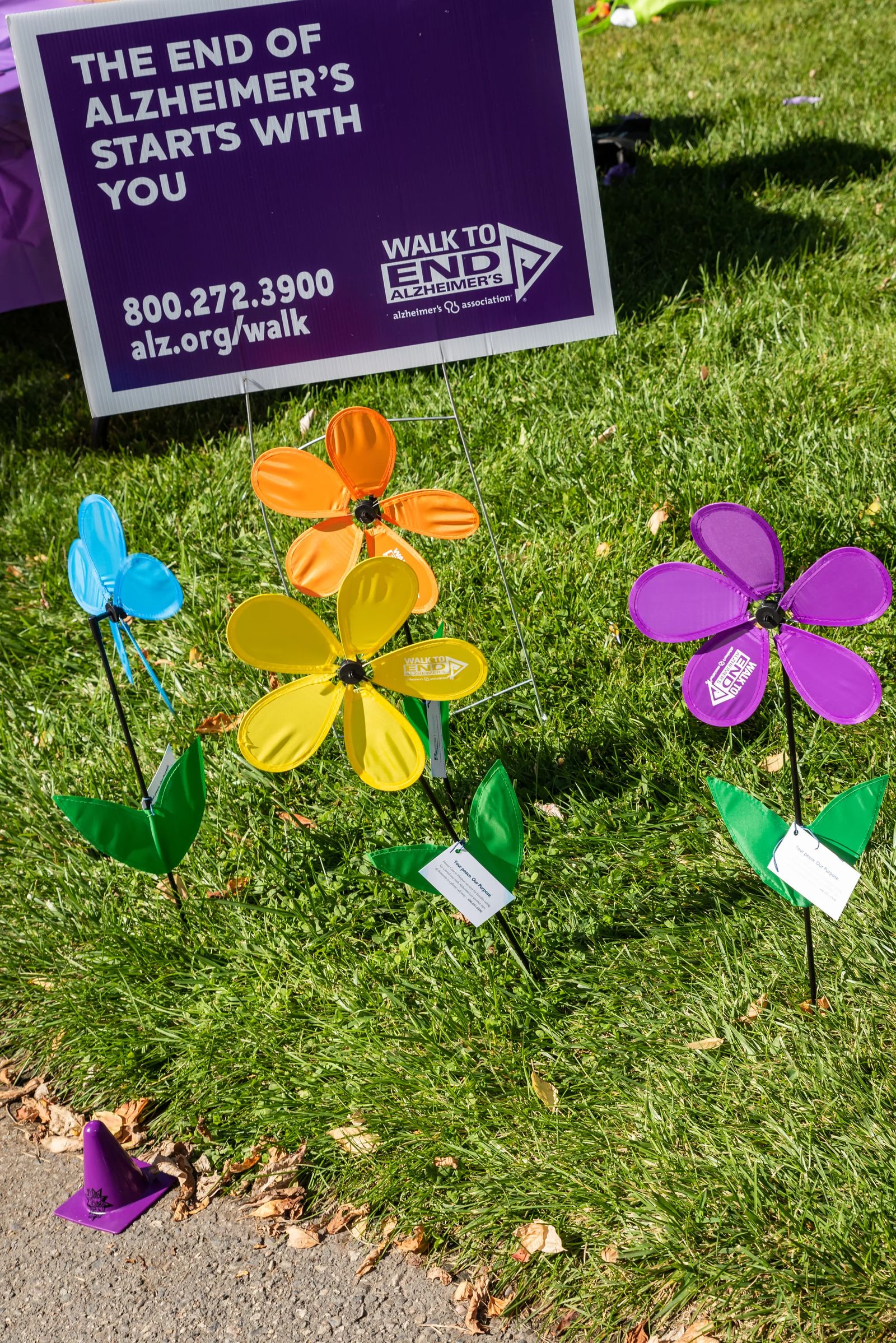
“It’s going to absolutely force the conversation about early detection because you don’t give a disease-modifying drug to someone who is well into the disease,” Lynn says. The 2020 Alzheimer’s Association Facts and Figures report shows that many who suffer symptoms are waiting for their doctors to bring up the topic. Doctors are waiting for their patients to broach the subject. Women are the hardest hit. “Of every three people with Alzheimer’s, two of them will be women,” Lynn says.
So, she says, the fight for research and awareness continues.
Today, Lynn spends her days working at home because of the pandemic. The work hasn’t slowed down. If anything, Lynn’s noticed an uptick in need.
“Every month, we are able to offer more than 30 educational programs because it is now all virtual,” she says, explaining that the Montana Chapter has partnered with other chapters in the region from here all the way down to New Mexico to share in program delivery.
As she works, pushing to make a difference, she sees firsthand how her husband is seizing every possible minute of life.
“There are days when he is up and out of the house and going and doing. He might go up to the Rod and Gun Club and shoot arrows for a few hours. He might take our puppy for a swim. Then, there are some days when he needs to take two or three naps, but what he doesn’t need right now is to get up and go to a job and have the stress of that,” Lynn says.
Not long after his diagnosis, Nardo retired and was able to take short- and then long-term disability. For a guy who was hellbent on working until he was 65, he now sees the beauty of taking life one day at a time. Dialing in his diabetes helped. Working on his golf game didn’t hurt either.
“If it doesn’t bring me joy, I don’t do it!” he says with a chuckle. “I just worry about the now.”
He’s come to accept what lies ahead.
“It’s not a big deal to me anymore,” Nardo says. “My friends cover for me. If I try to say I got par on a hole, they will say, no, you double bogeyed that. Sometimes I do it on purpose and they will tell me, ‘You’re wrong Cabrera.’” He turns a little more serious and adds, “Lynn and I always say that God has a plan for us. I am more a believer of that now than ever before. He is not going to disappoint us.”
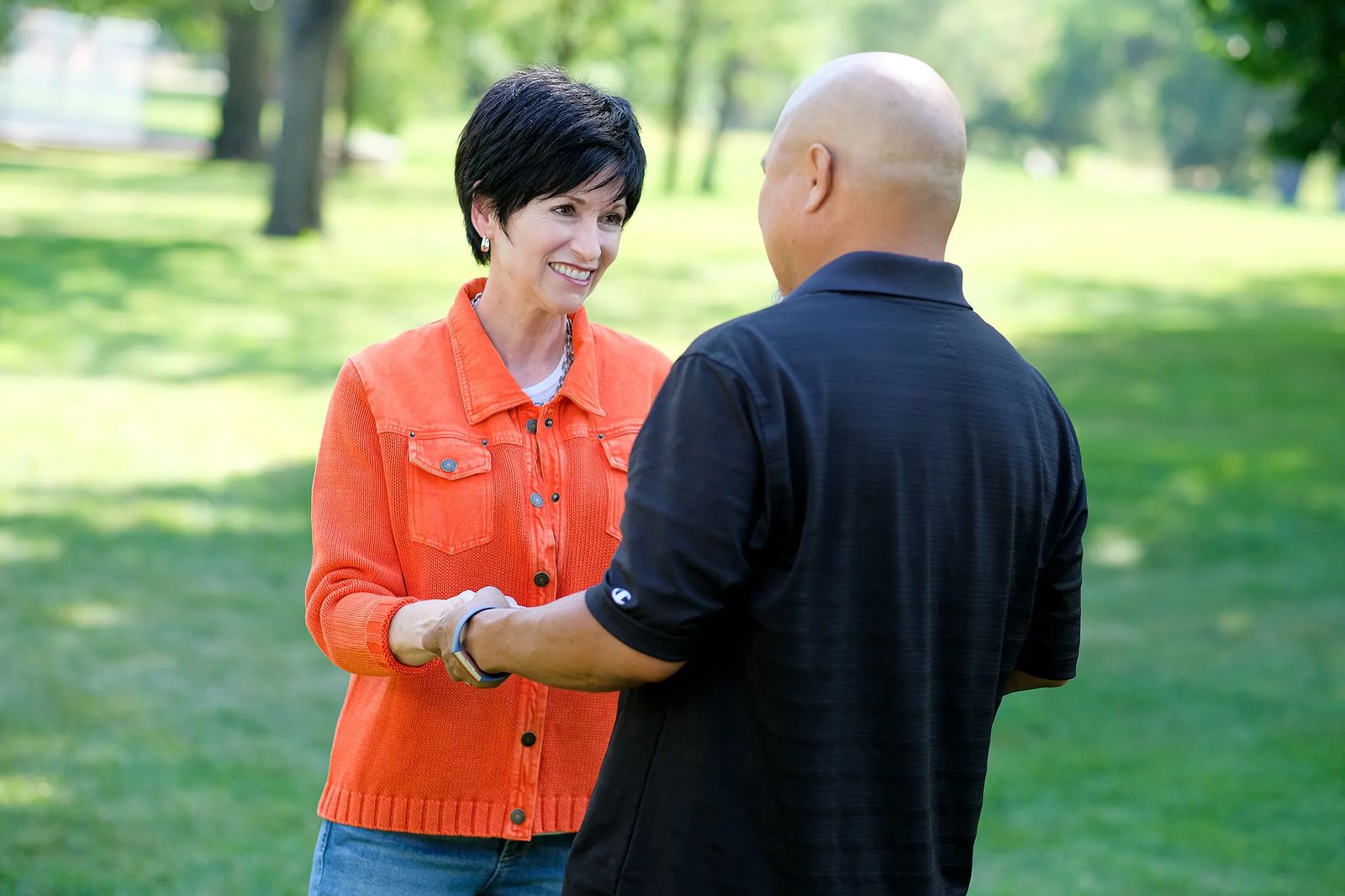
He feels blessed to have by his side the woman who was once his high school best friend and is now his soul mate.
“What’s not to love about her?” he says with an ever-present sparkle in his eye. “Oh, stop it!” Lynn says waving her hand. And then Nardo finishes, “There’s not one person I know on this earth that has anything bad to say about her. They think I married outside my league, which I did.”
Now, eight years since the early signs of his symptoms, Lynn knows early detection was a tremendous gift.
“That’s the beauty of it,” she says. “I think most people get diagnosed well into the disease process. So, it would have been five to eight years if we started in the middle. If you start closer to the beginning, maybe it’s 10 to 12?” She recognizes they’ve been given a window of opportunity to make critical decisions.
A couple of years ago, the Alzheimer’s Association added another flower to its Promise Garden. It’s one Lynn can’t wait to see planted. The white flower symbolizes an Alzheimer’s or dementia survivor.
“The Walk to End Alzheimer’s is the only one without a survivor lap. The cancer walk, part of the joy is the survivor lap that they take with applause,” Lynn says. “We don’t have that yet, but we will, and we are confident that the person is already alive today. One day we will have a white flower and then dozens and then hundreds and then thousands.”
Lynn is hopeful because the talk and awareness surrounding dementia is getting louder. Recently, the National Institutes of Health increased its annual budget for dementia research to $2 billion.
“That’s what scientists feel they need —every year — so that they can really begin to put the foot to the gas on this thing,” she says.
In the meantime, she holds on to her yellow, purple and orange Promise Garden flowers, feeling blessed to do the work that never seems to lessen in intensity.
“When you are living it at home and at work and on every front, it really doesn’t matter how much you are able to do for folks,” she says. “It’s never enough.”
Her fight is not just for every family affected in the state of Montana that she serves. It’s for her mom. For the memory of her father and father-in-law. And, for her beloved Nardo, who loves to walk each day by her side.
“He’s my rock,” Lynn says as she looks across the room at her husband. “We are really trying to not delay joy.”
HOPE FOR A CURE
Little things to advance the effort
WALK TO END ALZHEIMER’S
While walkers might not be able to gather for a large in-person event, that doesn’t mean the commitment to end Alzheimer’s has wavered. This year, the Walk to End Alzheimer’s can take place on every sidewalk, street, track or trail. Opening ceremonies in Billings will be held virtually on Sept. 27. Afterward, grab your family or small team to walk for a world without Alzheimer’s and all other dementia. Each year, the walk provides for roughly three-fourths of the operating budget for the Montana Chapter of the Alzheimer’s Association. To register your team, visit bit.ly/blgswalk or call (406) 252-3053.
FLOWER SHOWER
Instead of placing a flower in a Promise Garden, this year the Alzheimer’s Association is encouraging Flower Showers. Window clings in the various symbolic colors will be available for a donation. Shower a neighbor, a friend, a loved one or yourself. The hope is for thousands of flowers to be planted in windows and communities statewide. This year, the chapter is hosting a drive-by Promise Garden the day of the walk. To see the garden, drive by Dehler Park at Ninth Avenue North and North 27th Street in Billings from 11 a.m. to 5 p.m.
MARK YOUR CALENDAR
Last year, the Montana Chapter of the Alzheimer’s Association hosted its inaugural Creating Hope Gala. The event, which featured a silent and live auction along with dueling pianos for entertainment, was such a success — clearing $100,000 in funds raised — that they’re planning to host the gala again April 24, 2021.
To keep tabs on the chapter’s events, sign up for their newsletter at alz.org/montana.











